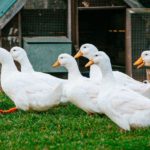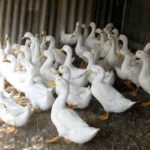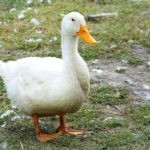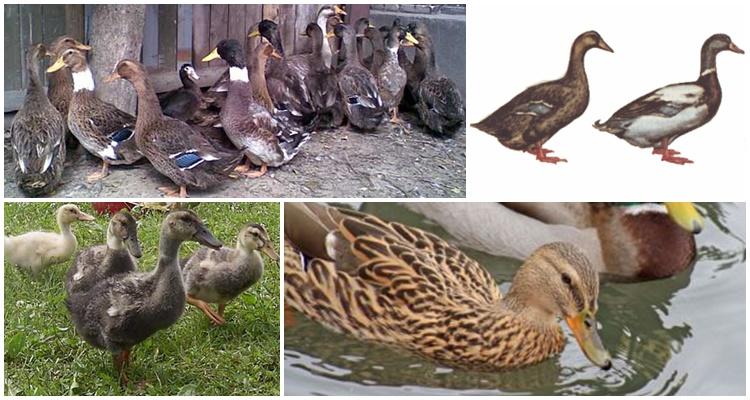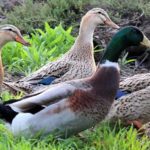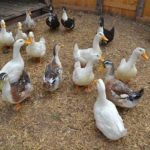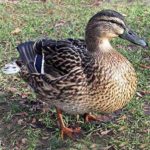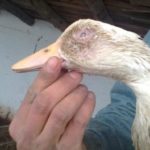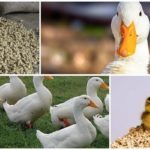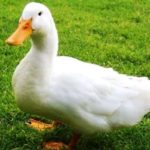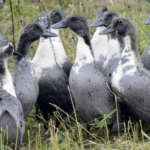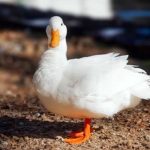Home poultry farming is a profitable business for farmers. Ducks are viable, early maturing species; with proper care and nutrition, they gain the required weight by 60 days. Poultry is bred for meat and eggs, and in industrial production - additionally for down and feathers. When breeding game for meat, it is important to know how much ducks weigh when they grow up to two months of age. Further, fattening the individual becomes unprofitable.
Average weight of ducks
Ducks have an average weight; an adult reaches a weight of 2.5-2.7 kilograms by 60 days of life.Weight is also affected by: breed of animal, age, gender. Some species of birds can reach a weight of up to 6 kilograms at 2 months. On farms, ducks are placed in poultry houses with limited range. Feeding and cleaning occur mechanically. This is how poultry is fed for meat. Intensive fattening of meat breeds allows you to get an elite bird of the appropriate weight by 50 days.
The average weight of ducks by day is shown in the table:
| Index | Age of ducklings, days | |||||
| 1-10 | 11-20 | 21-30 | 31-40 | 41-50 | 51-65 | |
| Duck weight (average value), g | 220 | 530 | 950 | 1450 | 2000 | 2300 |
A day-old duckling weighs, on average, 55 grams. At 10 days, the chick’s body weight increases 4-5 times.
Factors influencing performance
The meat productivity of ducks lies in the mass and quality before slaughter. The quality of meat products depends on the breed and age of the individual. Feeding and proper care are important factors. The quality score is also influenced by protein levels, metabolic energy and diet. The level of fatty acid composition of meat depends on the amount of vegetable and animal fats added to the diet.
In addition to proper nutrition of ducks, the issue of their maintenance is also important. Individuals of the meat breed are unpretentious in maintenance and care. When breeding, choose one of two options for placing the bird: on the litter or in the aviary. In summer they are placed in a clearing with fresh grass near a pond. In winter, the livestock is placed in a warm room.
Drinkers and feeders are installed in the poultry house. Enclosures are fenced off from each other. The room must have good ventilation. In the northern regions, heating is additionally installed in the poultry house. During breeding, birds must keep the air inside their enclosures clean and fresh. When raising ducks, take into account important points:
- No more than 3 adult ducks are placed per 1 square meter to eliminate the risk of infection or other diseases.
- Individuals are placed in spacious enclosures of at least 70*70 centimeters, with a height of 35 centimeters.
- More than 10 heads of young animals should not be placed on 1 square meter.
- If ducks are kept on a bedding, the floor is covered with hay or straw, first adding a layer of slaked lime.
- The floor is covered with a net, and trays are installed underneath to collect droppings, dirt, and feathers.
- The temperature in the poultry house should be within +7...+14 degrees, with an air humidity of 70 percent. For young animals, the air temperature is +22 degrees, with a humidity of 65 percent.
Before placing birds in cages for the first time, they are disinfected. The poultry house is ventilated, cleaned, feeders and drinking bowls are treated with an antiseptic. The enclosures are closed for quarantine for 20 days.
What to feed ducks to gain weight?
In home farming, livestock are fed in two ways:
- ready-made feed;
- natural food.
Feeding livestock with prepared feed is simple and affordable. Additionally, the birds are fed grass. Birds grow quickly on this diet. The disadvantage of this type of feeding is that it is expensive. With natural feeding, simple foods are included in the diet and grazing is organized. A balanced diet allows you to quickly grow poultry.
You can feed your livestock for rapid growth using available products:
- Cereal feeds, including barley, corn, wheat, oats and other crops. The grain is crushed and given in the form of crumbly mash. If it is impossible to crush the product, it is steamed in boiling water for several hours. Young animals and adults willingly eat steamed food.
- Succulent food - grass and vegetables can make up up to half of the total mass of duck food. This food is enriched with fiber and vitamins. Pets are provided with grazing or vegetation is placed in feeders.
- Animal feed. Individuals in nature feed on insects, snails, and worms. The diet for domestic animals includes: whey or skimmed milk, cottage cheese, bone meal.
- Mineral supplements are required in the diet of duck stock. The menu includes: chalk, eggshells, table salt. Calcium helps strengthen bone tissue, sodium helps with rapid absorption of food. The products are left in the feeder, the bird itself consumes the required amount of additives.
Adults are fed twice a day, young animals are given food 3-4 times a day. When grazing, the ducks are fed in the enclosure only in the evening.
Feeding the ducks is not a problem and does not require large financial costs. It is enough for the livestock breeder to monitor the cleanliness and freshness of the feed and choose the right balanced diet. If you follow simple rules, ducks quickly gain weight and produce high-quality meat.

